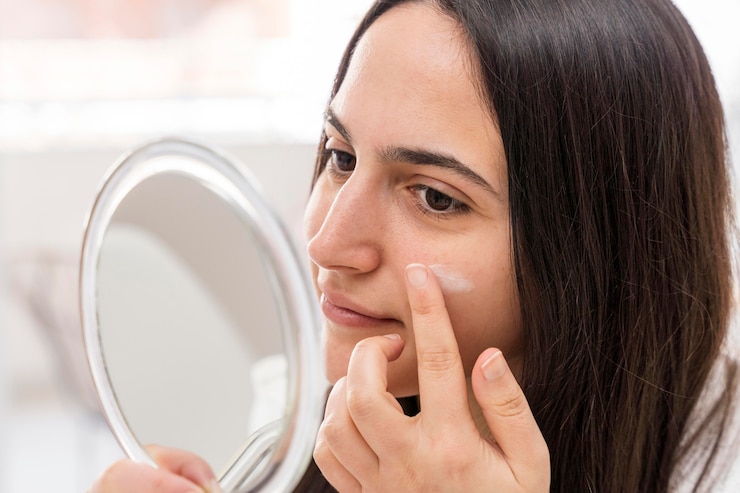Freckles and Dermal Pigmentation in Dubai are two skin conditions that often confuse due to their similarities in appearance. However, they differ significantly in their causes, characteristics, and treatment options. This article will explore both conditions in detail, helping readers understand their distinctions and how to manage them.
Understanding Freckles
What Are Freckles?
Freckles, also known as ephelides, are small, flat, brownish spots that appear on the skin, primarily in areas exposed to sunlight. They are most commonly found on the face, arms, and shoulders. Freckles are a result of an increase in melanin production, which is triggered by sun exposure.
Causes of Freckles
Freckles are primarily caused by genetic factors and sun exposure. Individuals with fair skin and light hair are more likely to develop freckles. The ultraviolet (UV) radiation from the sun stimulates melanocytes, the cells responsible for producing melanin. This increase in melanin leads to the formation of freckles.
Characteristics of Freckles
Freckles are usually small, measuring 1 to 2 millimeters in diameter. They can vary in color from light tan to dark brown, depending on the individual's skin tone and the amount of sun exposure. Freckles tend to become more pronounced during the summer months when sun exposure is increased and may fade in the winter.
Treatment Options for Freckles
While freckles are harmless and do not require treatment, many individuals seek to reduce their appearance for cosmetic reasons. Common treatment options include:
Topical Creams: Hydroquinone, retinoids, and vitamin C serums can help lighten freckles over time.
Chemical Peels: These treatments exfoliate the top layer of skin, reducing the appearance of freckles.
Laser Therapy: Laser treatments can target and break down melanin in the skin, effectively reducing freckles.
Sun Protection: Using sunscreen and protective clothing can prevent new freckles from forming and existing ones from darkening.
Understanding Dermal Pigmentation
What Is Dermal Pigmentation?
Dermal pigmentation refers to the discoloration of the skin that occurs deeper than the surface layer. It can manifest as spots, patches, or overall skin darkening. Unlike freckles, which are primarily superficial, dermal pigmentation affects the dermis, the layer of skin beneath the epidermis.
Causes of Dermal Pigmentation
Dermal pigmentation can be caused by several factors, including:
Hormonal Changes: Conditions like melasma, which often occurs during pregnancy, can lead to increased pigmentation.
Inflammation: Post-inflammatory hyperpigmentation can occur after skin injuries, acne, or eczema, leading to dark spots.
Sun Exposure: Prolonged UV exposure can also contribute to dermal pigmentation by stimulating melanin production in deeper skin layers.
Genetics: Some individuals may have a genetic predisposition to develop dermal pigmentation.
Characteristics of Dermal Pigmentation
Dermal pigmentation tends to appear as larger, irregularly shaped patches of color that may be brown, gray, or blue. These spots can vary in size and may not be uniform in color. Unlike freckles, dermal pigmentation does not fade significantly with reduced sun exposure.
Treatment Options for Dermal Pigmentation
Treating dermal pigmentation can be more challenging than treating freckles due to its deeper location in the skin. Common treatment options include:
Topical Treatments: Ingredients like hydroquinone, azelaic acid, and niacinamide can help lighten pigmentation over time.
Chemical Peels: Stronger chemical peels may be needed to penetrate deeper layers of skin and reduce pigmentation.
Laser Treatments: Various laser therapies can target deeper pigmentation, breaking down melanin and promoting a more even skin tone.
Microneedling: This technique involves creating tiny wounds in the skin to stimulate collagen production and can help improve pigmentation.
Key Differences Between Freckles and Dermal Pigmentation
Appearance
Freckles are typically small, flat, and uniform in shape, while dermal pigmentation appears as larger, irregular patches that can vary in color and size.
Causes
Freckles are primarily caused by sun exposure and genetic factors, whereas dermal pigmentation can result from hormonal changes, inflammation, and prolonged sun exposure.
Treatment Response
Freckles often respond well to topical treatments and laser therapies, while dermal pigmentation may require more intensive treatments to achieve significant results.
Prevention Strategies
Preventing Freckles
To prevent the formation of freckles, individuals should:
Use Sunscreen: Apply a broad-spectrum sunscreen with an SPF of at least 30 daily, even on cloudy days.
Avoid Peak Sun Hours: Limit sun exposure during peak hours (10 a.m. to 4 p.m.) when UV rays are strongest.
Wear Protective Clothing: Use hats, sunglasses, and long-sleeved clothing to shield the skin from the sun.
Preventing Dermal Pigmentation
Preventing dermal pigmentation involves similar sun protection strategies, along with additional measures such as:
Managing Hormonal Changes: For those prone to melasma, consulting a dermatologist for management strategies can be beneficial.
Treating Inflammatory Conditions Promptly: Addressing skin conditions like acne or eczema early can help prevent post-inflammatory hyperpigmentation.
Conclusion
Freckles and dermal pigmentation are two distinct skin conditions that can affect individuals differently. While freckles are generally harmless and can be treated for cosmetic reasons, dermal pigmentation may require more intensive treatment due to its deeper nature. Understanding the differences between these two conditions is essential for effective management and prevention. By taking proactive steps to protect the skin from sun exposure and addressing any underlying issues, individuals can maintain a healthy and even skin tone.






Comments